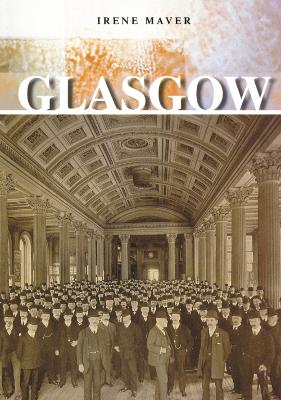Town and City Histories
1 total work
Glasgow is enshrined in the popular consciousness as a city of multiple and often contradictory identities. The 'Second City of Empire', the 'Venice of the North', 'Red Clydeside' and the 'Merchant City' are a few of the phrases that have been used to project the Glasgow image, positively and negatively. This new and extensively illustrated history explores the reality behind these stereotypes, showing Glasgow's considerable longevity as a Scottish ecclesiastical and commercial centre, yet focusing on the profound social, economic and political changes over the nineteenth and twentieth centuries. Glasgow uses much original material to illustrate the rich diversity of cultural influences that have contributed to the city's distinctive urban character. Particular emphasis is given to the people who shaped the ideas and attitudes of the times. Nineteenth-century economic success, most celebrated in the enduring mystique of Clyde shipbuilding, was associated with high-profile entrepreneurs who embodied both cosmopolitanism and individualism.At the same time, there was a passion in the projection of the progressive city and a commitment to social improvement that found expression in the assertive and increasingly collectivist brand of Glaswegian politics.
Yet, as the author explains, Glasgow's strong sense of civic patriotism was often overwhelmed by the sheer intensity of social problems, in one of the world's most populous cities by 1914. The dislocation of war and the trauma of economic depression gave further impetus to the quest for solutions, which took dramatic (if controversial) shape in post-1945 planning policies. Contemporary Glasgow thus bears the legacy of twentieth-century industrial decline as well as cultural renewal, although Glasgow shows that there is nothing novel about regeneration strategy in a city which has a long tradition of blending innovation with historical continuity. Beautifully illustrated with over 100 photographs, this vibrant book offers the reader an unparalleled insight to the development of this wonderful city.
Yet, as the author explains, Glasgow's strong sense of civic patriotism was often overwhelmed by the sheer intensity of social problems, in one of the world's most populous cities by 1914. The dislocation of war and the trauma of economic depression gave further impetus to the quest for solutions, which took dramatic (if controversial) shape in post-1945 planning policies. Contemporary Glasgow thus bears the legacy of twentieth-century industrial decline as well as cultural renewal, although Glasgow shows that there is nothing novel about regeneration strategy in a city which has a long tradition of blending innovation with historical continuity. Beautifully illustrated with over 100 photographs, this vibrant book offers the reader an unparalleled insight to the development of this wonderful city.
